Related Research Articles
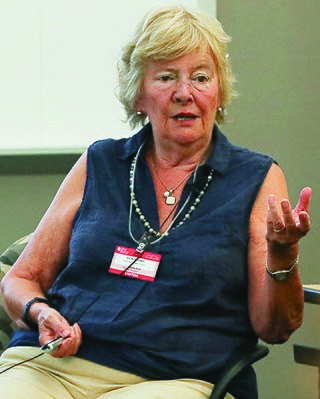
Dame Julia Stretton Higgins is a British polymer scientist. Since 1976, she has been based at the Department of Chemical Engineering at Imperial College London, where she is emeritus professor and senior research investigator.
Craig Jon Hawker is an Australian-born chemist. His research has focused on the interface between organic and polymer chemistry, with emphasis on the design, synthesis, and application of well-defined macromolecular structures in biotechnology, microelectronics, and surface science. Hawker holds more than 45 U.S. patents, and he has co-authored over 300 papers in the areas of nanotechnology, materials science, and chemistry. He was listed as one of the top 100 most cited chemists worldwide over the decade 1992–2002, and again in 2000–2010.
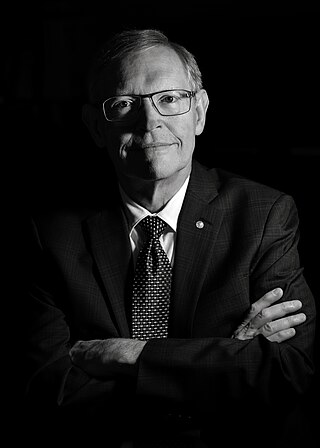
William Esco Moerner, also known as W. E. Moerner, is an American physical chemist and chemical physicist with current work in the biophysics and imaging of single molecules. He is credited with achieving the first optical detection and spectroscopy of a single molecule in condensed phases, along with his postdoc, Lothar Kador. Optical study of single molecules has subsequently become a widely used single-molecule experiment in chemistry, physics and biology. In 2014, he was awarded the Nobel Prize in Chemistry.
Tobin Jay Marks is an inorganic chemistry Professor, the Vladimir N. Ipatieff Professor of Catalytic Chemistry, Professor of Material Science and Engineering, Professor of Chemical and Biological Engineering, and Professor of Applied Physics at Northwestern University in Evanston, Illinois. Among the themes of his research are synthetic organo-f-element and early-transition metal organometallic chemistry, polymer chemistry, materials chemistry, homogeneous and heterogeneous catalysis, molecule-based photonic materials, superconductivity, metal-organic chemical vapor deposition, and biological aspects of transition metal chemistry.

Krzysztof "Kris" Matyjaszewski is a Polish-American chemist. He is the J.C. Warner Professor of the Natural Sciences at the Carnegie Mellon University Matyjaszewski is best known for the discovery of atom transfer radical polymerization (ATRP), a novel method of polymer synthesis that has revolutionized the way macromolecules are made.
Miriam Rafailovich is an American materials engineering researcher. She is the director of the Garcia Materials Research Science and Engineering Center at Stony Brook University as well as former co-director of the Chemical and Molecular Engineering program at Stony Brook University. Her publications focus mainly on nanoscale materials engineering, including nanofibers, supercritical carbon dioxide, and biodegradable polymers.
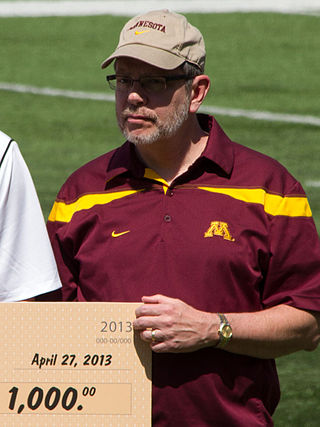
Eric William Kaler is an American chemical engineer and university administrator. He has served as the president of Case Western Reserve University since 2021.
Guillermo Carlos Bazan is an American chemist, material scientist, and academic.
Cynthia Friend is president and chief operating officer of The Kavli Foundation. She is on leave from the department of chemistry and chemical biology at Harvard University. Friend was the first female full professor of chemistry at Harvard, attaining the position in 1989. Friend has held the Theodore William Richards Chiar in Chemistry and served as professor of materials science in the Paulson School of Engineering.

Iain McCulloch is Professor of Polymer Chemistry, in the Department of Chemistry, at the University of Oxford, UK, a fellow and tutor in chemistry at Worcester College, and an adjunct professor at King Abdullah University of Science and Technology (KAUST), Saudi Arabia, and a visiting professor in the Department of Chemistry at Imperial College London.

Malika Jeffries-EL is an American chemist and professor of chemistry at Boston University studying organic semiconductors. Specifically, her research focuses on developing organic semiconductors that take advantage of the processing power of polymers and the electronic properties of semiconductors to create innovative electronic devices. She was elected as a Fellow of the American Chemical Society in 2018.
Benjamin Thomas Chu is a Chinese-born American chemist. He is a Distinguished Professor Emeritus of Research at Stony Brook University.
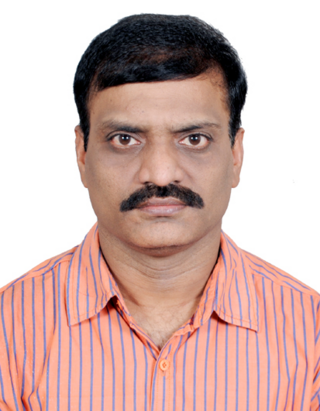
Kumar Biradha is a researcher in the field of crystal engineering. He was born on 15 June 1968 in Relangi, Andhra Pradesh. He is a professor at the Department of Chemistry, Indian Institute of Technology, Kharagpur, and a member of Editorial Advisory board of Crystal Growth & Design, an American Chemical Society Journal.
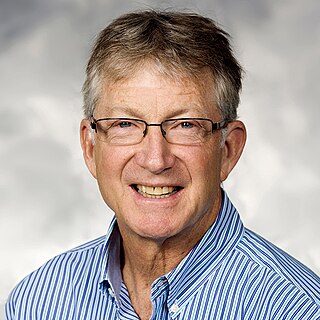
James L. Skinner is an American theoretical chemist. He is the Joseph O. and Elizabeth S. Hirschfelder Professor Emeritus at the University Wisconsin-Madison. He is also a member of the Scientific Advisory Board of the Welch Foundation. Most recently, Skinner was the Crown Family Professor of Molecular Engineering, professor of chemistry, director of the Water Research Initiative and deputy dean for faculty affairs of the Pritzker School of Molecular Engineering at the University of Chicago. Skinner is recognized for his contributions to the fields of theoretical chemistry, nonequilibrium statistical mechanics, linear and nonlinear spectroscopy of liquids, amorphous and crystalline solids, surfaces, proteins, and supercritical fluids. Skinner is the co-author of over 230 peer-reviewed research articles.
Jan Cornelis Maria van Hest is a Dutch scientist of organic chemistry, best known for his research regarding polymersomes and nanoreactors. He currently holds the position of professor of bioorganic chemistry at Eindhoven University of Technology and is scientific director at the Institute of Complex Molecular Systems. Among the awards he has received, he was one of the recipients of the 2020 Spinoza Prize.
Nancy Sarah Goroff is an American organic chemist who formerly served as chair of the chemistry department at Stony Brook University. Her research investigates conjugated organic molecules, including polymers, halocarbons and buckyballs. During the 2020 United States elections Goroff ran to represent New York's 1st congressional district, and was defeated by the incumbent, Lee Zeldin.

Rachel A. Segalman is the Edward Noble Kramer Professor and Department Chair of Chemical Engineering at University of California, Santa Barbara (UCSB). Her laboratory works on semiconducting block polymers, polymeric ionic liquids, and hybrid thermoelectric materials. She is the associated director of the Center for Materials for Water Energy System, an associate editor of ACS Macro Letters, and co-editor of the Annual Review of Chemical and Biomolecular Engineering.
Christopher William Bielawski is a distinguished professor at Ulsan National Institute of Science and Technology and group leader of the Synthesis Group in the Center for Multidimensional Carbon Materials. His research in synthesis and polymer chemistry has resulted in more than 290 publications and multiple patents.
Surita Bhatia is an American chemist who is professor and vice provost of faculty affairs at Stony Brook University. Her work considers the structure of soft materials, including polymeric hydrogels and colloidal glasses. She was elected Fellow of the American Institute of Chemical Engineers, the American Institute for Medical and Biological Engineering and the Society of Rheology in 2020.
Andy Haishung Tsou is a retired ExxonMobil materials scientist known for developing synchrotron X-ray scattering and atomic force microscopy techniques for polymer research, applying the techniques in service of development and commercialization of new polyolefin materials.
References
- 1 2 3 4 5 6 7 8 9 10 11 12 13 14 "Faculty Page". Stony Brook Chemistry Faculty. Archived from the original on 23 July 2012. Retrieved 31 July 2012.
- 1 2 3 4 5 "Benjamin S. Hsiao Named Vice President for Research at Stony Brook University". Stony Brook News. Stony Brook University. Archived from the original on 12 July 2012. Retrieved 31 July 2012.
- 1 2 3 4 "Benjamin Hsiao: Bio". University Council. Archived from the original on 1 August 2012. Retrieved 31 July 2012.
- 1 2 3 4 Calamia, Matt. "Benjamin Hsiao is Stony Brook University's research VP". Archived from the original on 21 April 2012. Retrieved 31 July 2012.
- 1 2 3 4 5 6 7 8 9 10 "Benjamin S. Hsiao Named VP for Research". Stony Brook Happenings. April 12, 2012. Archived from the original on 16 March 2016. Retrieved 2 August 2012.
- 1 2 3 "advanced Nanostructure Characterization Using Scattering/ Diffraction Techniques". Stevens Institute of Technology. Retrieved 2 August 2012.
- 1 2 3 4 5 6 Stanley, Samuel. "Benjamin S. Hsiao, PhD, Vice President for Research". Stony Brook University. Archived from the original on 1 August 2012. Retrieved 2 August 2012.
- 1 2 3 4 5 6 7 8 9 10 "Research Page". Archived from the original on 3 September 2012. Retrieved 31 July 2012.
- 1 2 3 4 5 6 7 8 "American Chemical Society Profile". American Chemical Society. Archived from the original on 27 February 2015. Retrieved 2 August 2012.
- 1 2 3 4 "Benjamin Hsiao, Stony Brook University". University of Michigan: Materials Science and Engineering. Retrieved 2 August 2012.
- 1 2 3 4 "Four SBU Professors Elected AAAS Fellows". Stony Brook News. Jan 23, 2012. Archived from the original on 26 January 2012. Retrieved 2 August 2012.
- 1 2 3 4 "Benjamin S. Hsiao Named a Fellow of the American Association for the Advancement of Science". Stony Brook News. Jan 27, 2011. Archived from the original on 29 January 2012. Retrieved 2 August 2012.
- ↑ "2015 Award Winners" (PDF). ACS PMSE. 2015. Retrieved 28 March 2023.